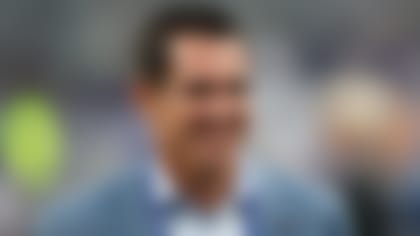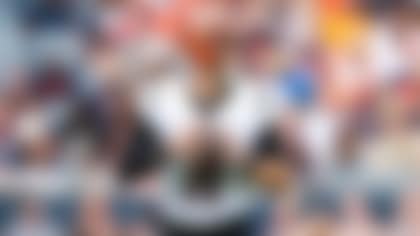By Bill Bradley, contributing editor
Dean Blandino, the NFL's vice president of officiating, said Tuesday on NFL Network's "NFL Total Access" that the line-overload penalty against the San Diego Chargers during Monday's loss to the Houston Texans was the wrong call.
"No, this was not a correct call," Blandino said. "This is not the intent of the rule as it was written.
"The rule is to protect the snapper on a field goal or extra point from a direct forcible blow to the head or neck area, or with the crown/forehead/hairline parts of the helmet to the body," Blandino added. "It was not designed to prohibit any contact with the snapper, which is what happened on this play."
During the play in question, Chargers nose tackle Cam Thomas made light contact with Texans long snapper Jon Weeks. Thomas was called for unnecessary roughness.
After the alleged violation, Randy Bullock's 37-yard field goal was taken off the scoreboard and the Texans accepted the personal foul, which pushed them half the distance to the goal line at the Chargers' 9-yard line. Quarterback Matt Schaub threw a touchdown pass to tight end Owen Daniels on the next play.
Blandino said the rule was created to avoid putting the long snapper in a defenseless position on field-goal attempts, not to avoid all contact with the long snapper.
"Let's walk through the play last night first," Blandino said. "And you're going to see here, here's the center and it's going to be No. 92, Cam Thomas, that's going to make the contact. But basically there's some incidental contact with his left leg to the head/neck area, but that is not a foul. That is legal contact. This should not have been called. It's a judgment call by the umpire, he's looking at that, and in his judgment, he felt that it was enough for a foul. And in our review today, we felt that it was not.
"Now I'll show you an example of what is a foul," Blandino continued. "This was a play that we used in our visits in the offseason to the coaching staffs and the players. Here you're going to see a direct blow to the head/neck area of the center. That's what the rule is designed to protect the player in that snapping posture. Think of a receiver who's trying to catch a pass. You can't hit him in the head or neck area, you can't hit a defenseless snapper, while he's in that posture, in the head or neck area either."



